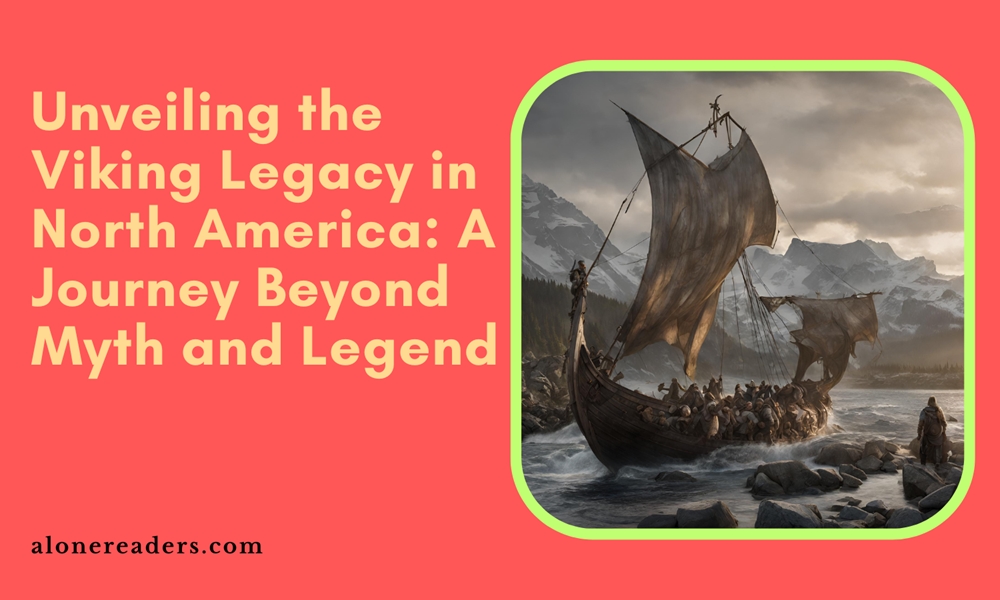
In the annals of history, the Vikings have often been portrayed as fearsome warriors and intrepid explorers. Their presence in North America, however, remains a story less told, shrouded in mystery and the mists of time. Recent archaeological discoveries and historical research are now shedding light on this intriguing chapter of the past, revealing the extent of Viking exploration and settlement in the New World.
The Viking Age, roughly spanning from the late 8th to the early 11th century, was a period marked by the expansion of these Norse seafarers. Their journeys took them far from their homelands in Scandinavia, reaching the shores of Greenland and Iceland. But it was not until the turn of the millennium that they would cross the Atlantic, setting foot on North American soil.
The saga of the Viking exploration in North America starts with the iconic figure of Leif Erikson, a Norse explorer from Iceland. According to medieval Icelandic sagas, Erikson set out on a journey westward around the year 1000 AD, eventually landing in a place he called "Vinland." This land was described as being rich in resources, with lush forests and abundant wildlife – a stark contrast to the harsh landscapes of Greenland and Iceland.
The exact location of Vinland has long been a subject of debate among historians and archaeologists. It wasn't until the 1960s that a significant breakthrough occurred. At L'Anse aux Meadows, on the northern tip of Newfoundland in Canada, a team led by Norwegian explorer Helge Ingstad and his wife, archaeologist Anne Stine Ingstad, discovered the remnants of a Norse settlement. This site, dating back to around 1000 AD, contained the ruins of eight timber-framed buildings along with various artifacts of Norse origin. The discovery was groundbreaking, providing the first concrete evidence of Viking presence in North America, nearly 500 years before Christopher Columbus.
The L'Anse aux Meadows site has since been extensively studied, revealing fascinating details about the Viking settlers. The buildings, resembling Norse longhouses, were likely used for various purposes – living quarters, workshops, and storage facilities. Artifacts found at the site, including a bronze cloak pin, a spindle whorl, and iron rivets, suggest a small but well-equipped group of settlers capable of long-distance sea travel and sustaining a settlement in a new land.
Beyond L'Anse aux Meadows, evidence of Viking presence in North America is sparse but compelling. In the 1950s, a Norwegian ethnographer, Helge Ingstad, and archaeologist Anne Stine Ingstad, identified and excavated a Viking settlement at L'Anse aux Meadows in Newfoundland, Canada. This site, believed to be part of Vinland, featured remnants of eight Norse buildings and numerous artifacts, affirming the Norse presence in North America around the year 1000 AD.
The reason behind the Viking exploration and settlement in North America is multifaceted. Initially, it may have been driven by the adventurous spirit and the search for new trading routes and resources. However, it's likely that the increasingly crowded and politically complex situation in Scandinavia also played a role, pushing these seafarers to seek new lands.
While their time in North America was relatively brief and their settlements small, the Vikings left an indelible mark on the continent’s history. They were the first Europeans to reach these shores, long before the well-documented voyages of Christopher Columbus and John Cabot. Their arrival marked the beginning of the European awareness and eventual colonization of the Americas.
The impact of the Viking presence in North America goes beyond historical significance; it has become part of the cultural imagination. The sagas, passed down through generations, have inspired numerous literary and artistic works, capturing the adventurous spirit of the Vikings. In modern times, the story of the Norse in North America has become a symbol of exploration and discovery, challenging the traditional narrative of European exploration.